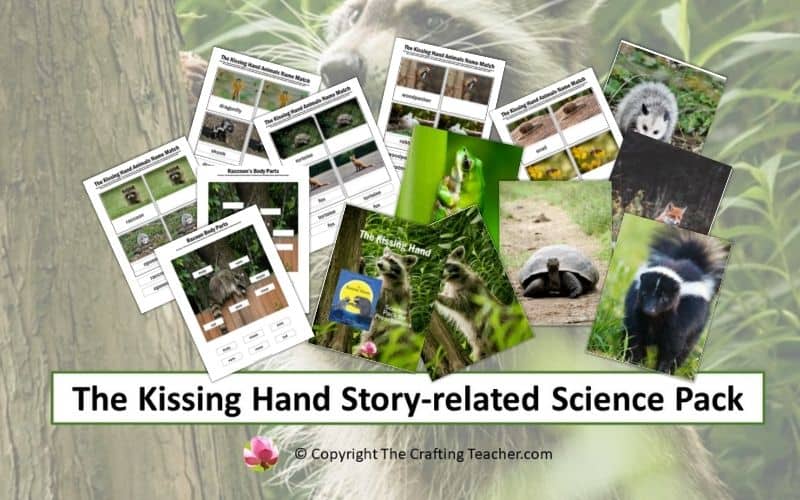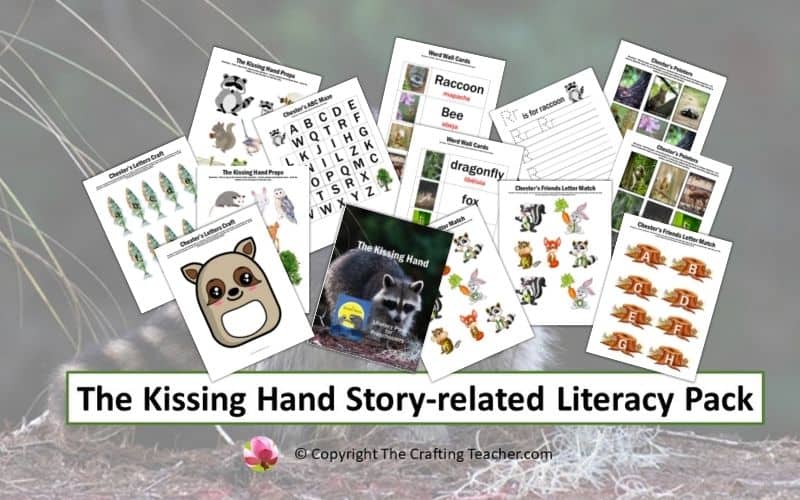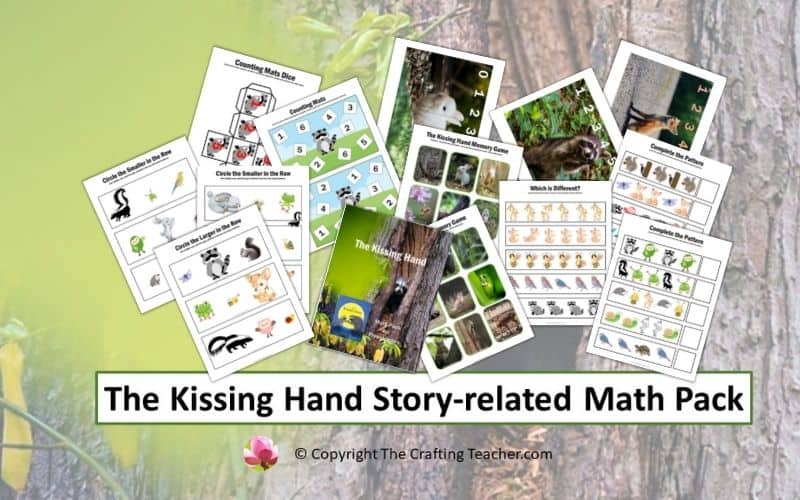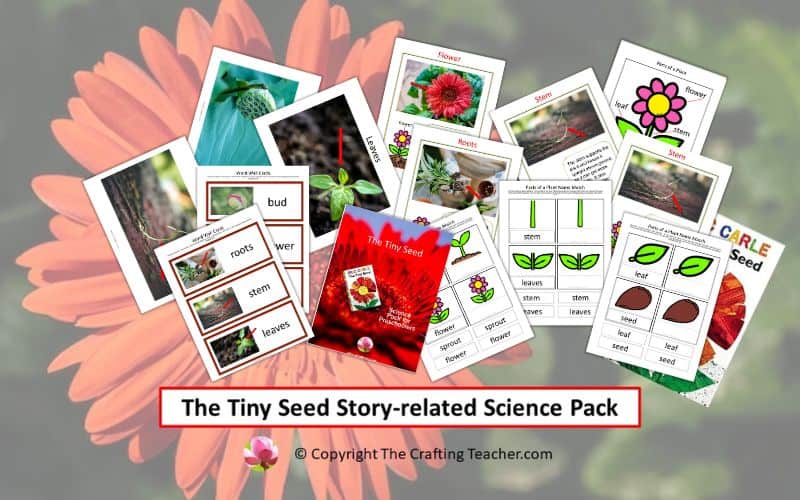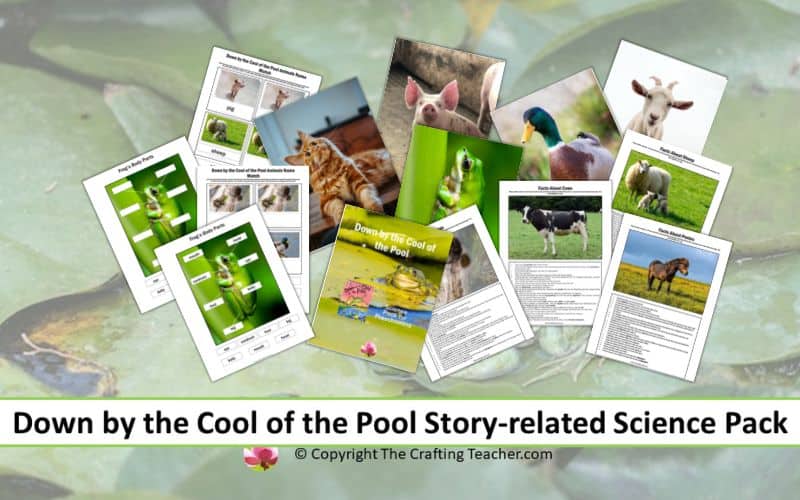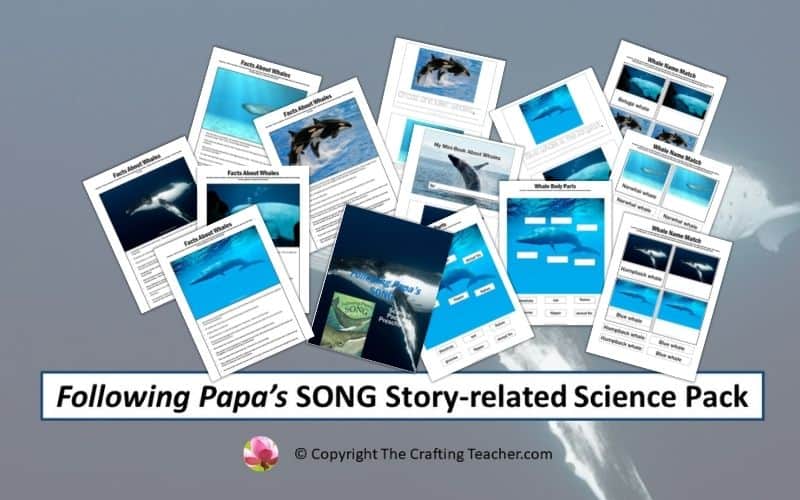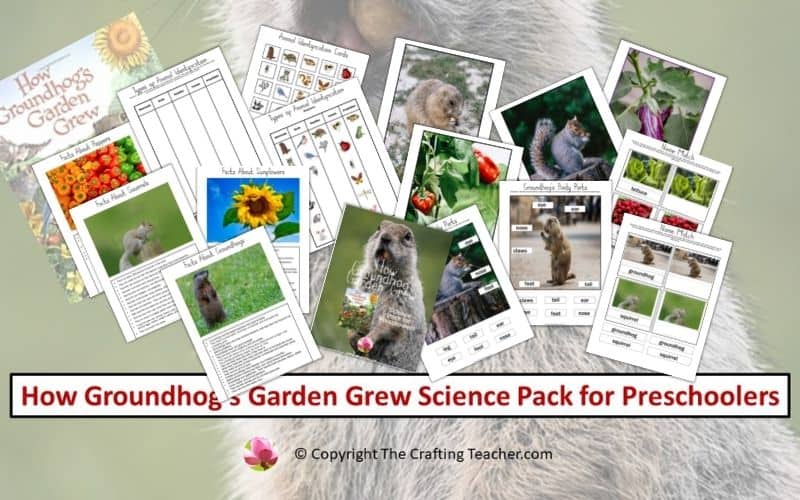The Kissing Hand Story-related Science Pack For Preschoolers
Affiliate Disclosure: “This post contains affiliate links, which means I receive a small commission, at no extra cost to you, if you make a purchase using those links.”
I love using storybooks to teach most of the domains, if not all of them, and my favorite one to start the new school year is The Kissing Hand by Audrey Penn. This book is a story about a little raccoon named Chester who is afraid to go to school, his mother shares a family secret and kisses his hand to let him know that her love will go with him, no matter where he is.
I think many of the children who start school might be feeling like Chester, and this book can give them a little reassurance. Its beautiful illustrations will also encourage their curiosity about their world and, let’s face it, who doesn’t find raccoons adorable, right? giving you a perfect opportunity to use the story for a science lesson.
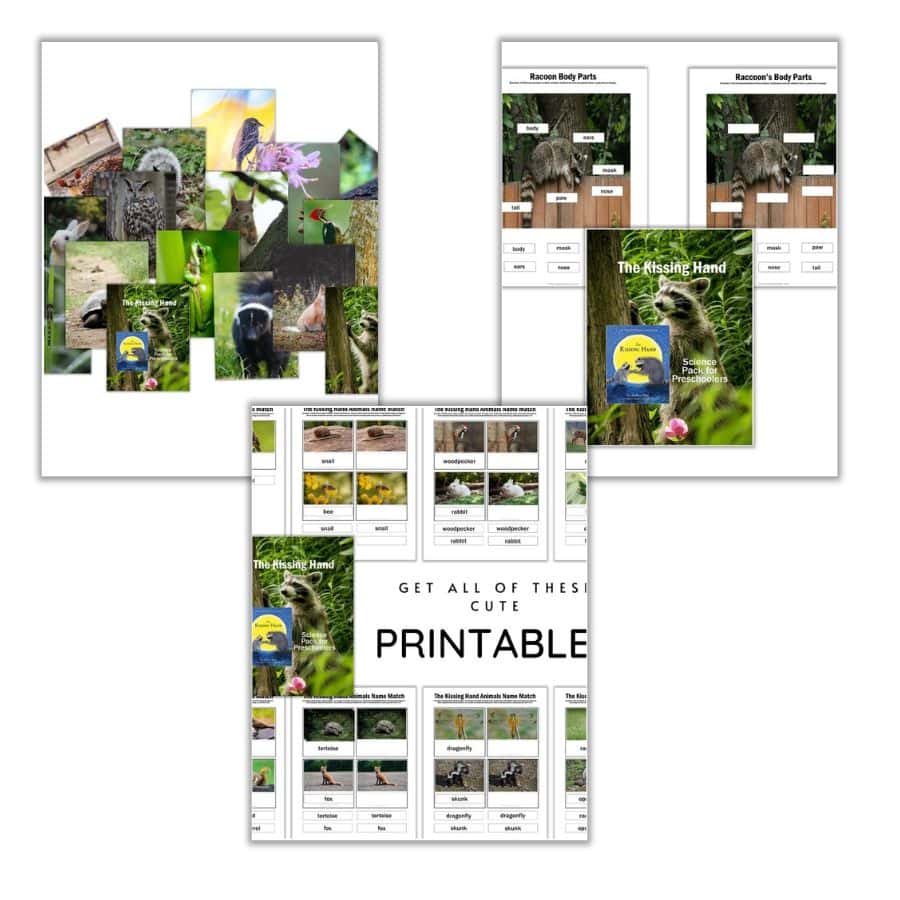
I included a FREE The Kissing Hand 28-page long Science Pack that includes four different fun and educational science activities, that you can do with your preschoolers in the classroom or at home, to go along with this story. You can get it at the end of this post.
Benefits of Teaching Science to Preschoolers
Since curiosity is as natural in young children as breathing, we must take advantage of their natural curiosity and help them develop their scientific thinking, in a fun and interactive way, which will provide them with many benefits, such as:
- Use their interest in exploring and experimenting to establish a positive connection to science and encourage them to love it and stay interested for many years, if not thorough their entire life.
- Stimulate their scientific thinking helping them make sense of the world around them, and understand why things happen and how they work.
- Extend their vocabulary by promoting the development of language using scientific words, their communication, teamwork and cooperation, reasoning, and problem-solving skills. You can use science to teach every domain because it can easily tie up to literacy, math, and art. Therefore, always encourage your children to ask questions, observe different types of natural phenomena, experiment, and explore, but, most importantly, give them plenty of opportunities to do just that by offering fun, interactive, and hands-on experiences.
The Kissing Hand Science Activities
There are many science activities you can do using this storybook as a base, and I wanted to mention some of the activities I like to use.
Explain What is a Raccoon and Some Important Facts
Show them a toy raccoon and/or real pictures. Ask them what they know about raccoons using KWL charts (K = what they know; W = what they want to know and L = what they learn).
Write down everything they know about a raccoon in the K column and everything they want to know under the W column. At the end of the week, when you review what they learned about raccoons, write down the information in the L column). Keep it up to allow them to come back to it, discuss the information, and ask questions about it.
Top Raccoon Facts for Kids
- Raccoons grow to be as big as a medium size dog.
- Raccoons are mammals, which means that mommy raccoons carry their babies on their tummy and feed them breast milk when they are born.
- Mommy raccoon can have 2 or 3 babies called kits, and she keeps them safe.
- Raccoons have very distinct markings like rings on their bushy tail and a black mask across their faces.
- Raccoons live for 2 or 3 years because they can be hit by a car, eaten by a predator, or get sick.
- Raccoons are wild animals, and they can bite. Some can carry rabies.
- Raccoons are very intelligent and can climb trees super well.
- Raccoons are omnivores, which means they eat almost anything like plants, vegetables, clams, fish, insects, nuts, fruits, small animals, and even human food.
- Raccoons are nocturnal, which means they sleep during the day and play and hunt at night.
- Raccoons live in Canada, the United States, and Mexico, in woodlands, farms, and cities.
- Raccoons have thumbs like us and they can open drawers, doors, and even refrigerators.
These interesting short videos from YouTube show raccoons’ characteristics very nicely.
Learning the Body Parts of a Raccoon
I added this activity as part of The Kissing Hand Science Pack. Print the picture of a raccoon in white cardstock and laminate it. Add tags with the name of its body parts previously printed in white cardstock, laminate them, and use Velcro to attach them. Teach the children the names of their body parts and what are they for. Children can practice matching the names of the body parts with the parts of the raccoon.
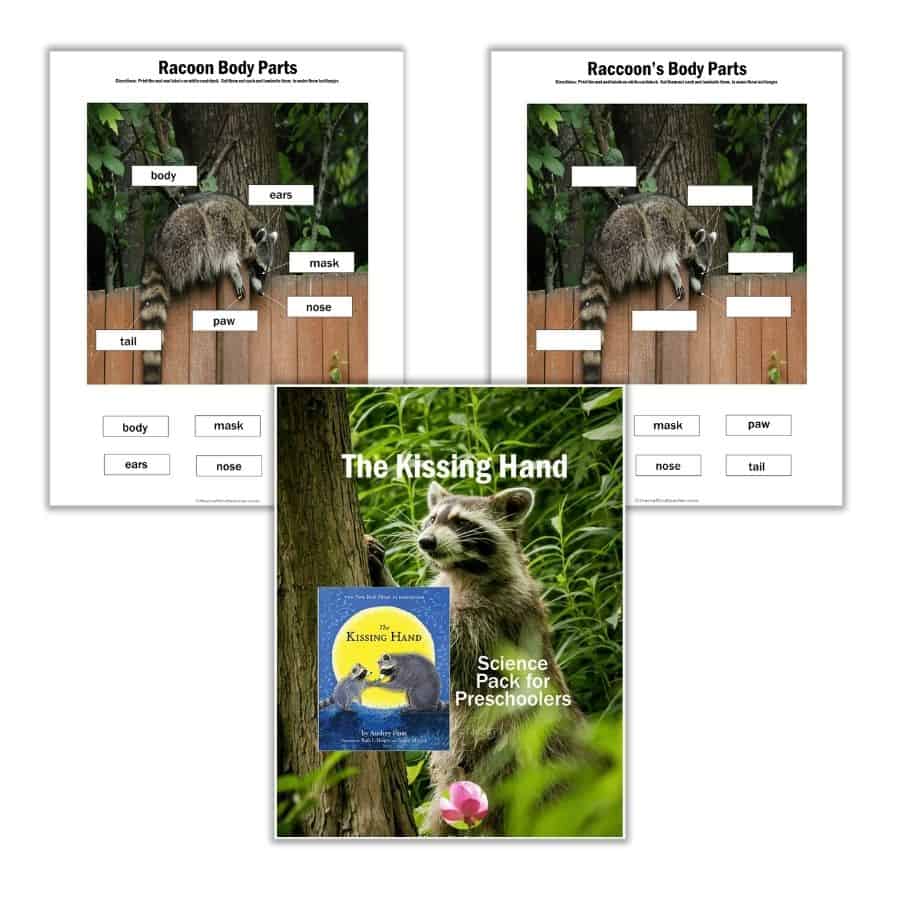
Nocturnal Animals
Explain that nocturnal animals are those that sleep during the day and are active at night, like raccoons. They also have special physical characteristics that make their lives at nighttime activity easier. For example, many nocturnal animals have special eyes that help them see well in the dark, such as raccoons, owls, and cats. Other animals use echolocation to find their way like bats and shrews. And others have excellent hearing like rabbits and mice.
If you want to dig more into nocturnal animals, Stay at Home Educator has a simple lesson plan that you might be interested in. You can find it here. It is also a good idea to show them a video for them to see some of these animals, instead of imagining them. I found the following video from YouTube that you might want to use for this purpose.
Other Animals in The Kissing Hand Story
I suggest keeping it simple and sweet and just talking about raccoons. Maybe you can say the name of the other animals that appear in the story and a couple of facts about each of them, but I will suggest coming back to this book during the school year if you want, and introduce more facts about those other animals at a later time.
I found beautiful pictures of the animals in the story in Pexels and Unsplash, and I wanted to incorporate them into The Kissing Hand Science Pack, so you can have them handy.
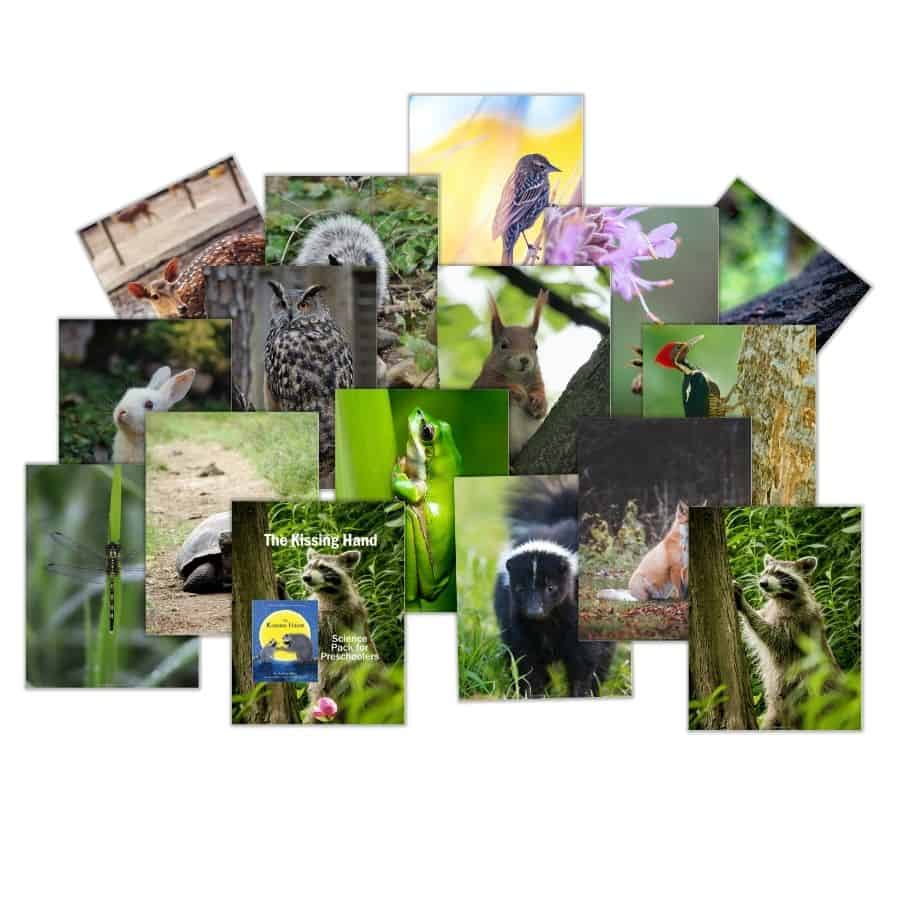
The Kissing Hand Name Match Activity
The story shows other animals throughout, and even when I don’t recommend talking much about those at the beginning of the school year to avoid overwhelming your preschoolers with information and confusion, it is a good idea just to mention the names of those animals, which most probably are already known by your students.
With this in mind, I created an activity to encourage the children to match these animals’ names. The activity comes with 8 pages with 2 sets of cards each, for a total of 30 cards. Each set has one with the picture and name of the animal and another card with just the picture, plus labels. They include 15 different animals: raccoon, possum, dragonfly, skunk, bird, squirrel, tortoise, fox, deer, frog, woodpecker, rabbit, snail, bee, and owl, and they are part of The Kissing Hand Science Pack.
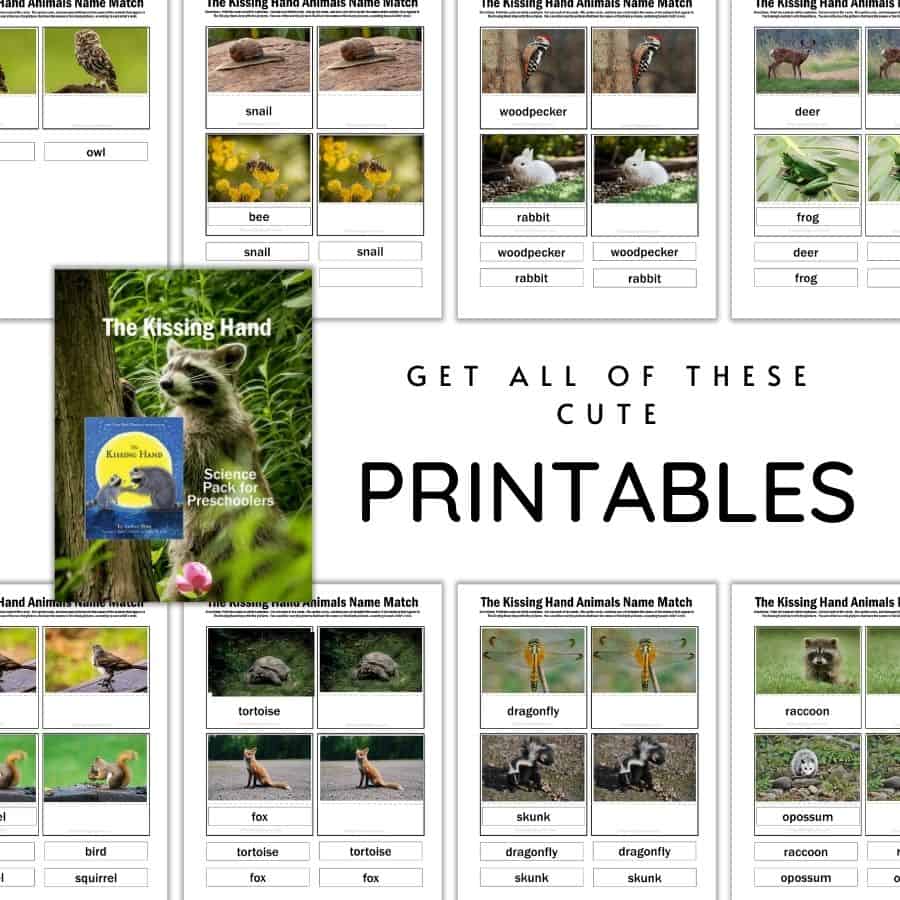
Books About Raccoons
As usual, I like to include books in all my activities. Place them in all your centers to encourage your preschoolers to see the pictures and ask questions about them. That way you will increase the possibilities of teachable moments, and enrich the learning process of your kiddos. Below are some of the most interesting books you can find.
You can find these books at your local library, used book store, and on Amazon. The titles have my affiliate links, that will take you directly to the right Amazon page.
- Raccoons! by Hope Aicher. This book is a collection of full-color photos and fun, interesting facts about raccoons.
- Exploring the World of Raccoons by Tracy C. Read. Describes the natural history of these animals and explains how that heritage helps them thrive in cities as well as in fields and woodlands.
- Love You S’More by Melinda Lee Rathjen. In this little book, two competitive raccoons realize that with all that love, everyone wins.
- Kiss Those Toes by Rainstorm Publishing. This sweet, rhyming story follows a group of forest animals as they play a game of hide-and-seek with their children and playfully kiss their toes, noses, cheeks, and bellies when they find them.
- Raccoon on His Own by Jim Arnosky. When a baby raccoon is swept downstream in an abandoned canoe, he feels afraid. But soon he notices all kinds of things he has never seen before, and from the safety of his little boat, he begins to explore the world around him.
You can use these ideas by themselves, but I will invite you to combine them with the literacy and math activities I created for this beautiful story, The Kissing Hand, to take advantage of the opportunity this book offers. Remember that for a more comprehensive and complete educational process, you should not divorce literacy from math, science, or any other domain. They intermingle together and complement each other.
Pin It For Later
If you are in a rush and don’t have time to read the post and download the printable but want to save it for later, pin it to one of your Pinterest boards for later.
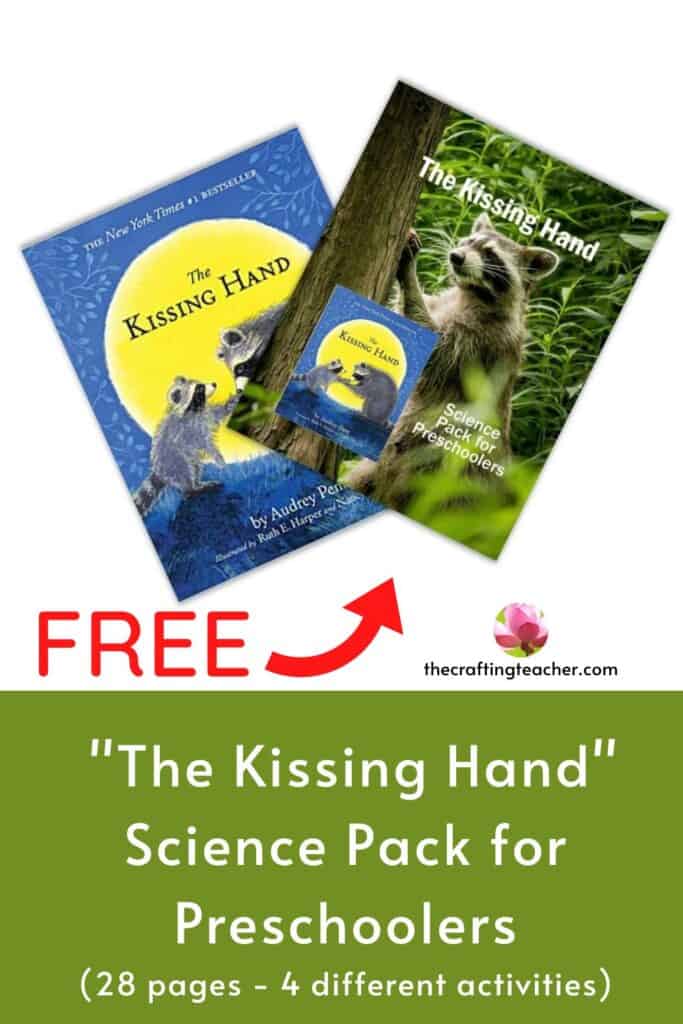
Don’t forget to download The Kissing Hand Science Pack. Just click the bottom below, and type your information, for an immediate download.
You can use these ideas by themselves, but I will invite you to combine them with the literacy and math activities I created for this beautiful story, The Kissing Hand, to take advantage of the opportunity this book offers. Remember that for a more comprehensive and complete educational process, you should not divorce literacy from math, science, or any other domain. They intermingle together and complement each other.
Be happy, safe, and creative. I wish you well.
Love,

P.D. Please let me know if you like any of these ideas worked for you, or if you think I need to add or replace something. My goal is to help you in any way I can and I don’t like anything better than to post something that you might find useful. Also, if you come up with different ideas and want to share them, I would love to post them as well.

